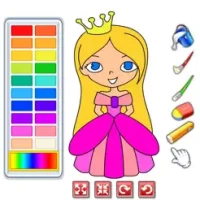
Latest Version
Version
3.10
3.10
Update
November 14, 2024
November 14, 2024
Developer
Accounting Play by John Gillingham CPA
Accounting Play by John Gillingham CPA
Categories
Games
Games
Platforms
Android
Android
Downloads
0
0
License
Free
Free
Package Name
in.thirtyfour.accountingplay_debitscredits
in.thirtyfour.accountingplay_debitscredits
More About Debit and Credit - Accounting
Debit and Credit teaches the accounting equation with an Android game. What is Debit and Credit in Accounting? Learn here with the fully unlocked version of Accounting Play - Debits & Credits. Get all T-Accounts, unlimited time, and unlimited play.
Students: crush your accounting exams
Bookkeepers: learn how to directly adjust the general ledger
Entrepreneurs: understand your books
Check out the study section and subscribe for great free resources, including a video course with printouts to help you practice.
Accounting Play Paid teaches the accounting equation with an iPhone & iPad game. Use Debit and Credit coins to learn, study, basic accounting and training. Play against the world as you learn. Study materials to learn the equation, debits & credits, journal entries, and accounting theory is included for free. Whether you are studying for the CPA exam or taking your first accounting course, Accounting Play will help you learn in a fast and fun way.
More at: http://www.AccountingPlay.com
Debits and credits form the foundation of the accounting system. The mechanics of the system can be tough to get a first, but the game makes it much easier! Once understood, you will be able to properly classify and enter transactions. These entries makeup the data used to prepare financial statements such as the balance sheet and income statement.
Every accounting transaction involves at least one debit and one credit. The sum of debits and the sum of credits for each transaction and the total of all transactions are always equal. A list of all transactions appears in the general ledger. Debits are always presented before credits.
The double entry system categorizes transactions using five account types: Assets, liabilities, equity, income, and expense. The same account may also be used in a two-part transaction if there is an increase and a decrease of the same category. Assets, liabilities, and equity make up the balance sheet and form the equation: A = L + E. Revenue and expenses make up the income statement and can generally be expressed as Revenue – Expenses = Income or Loss.
To help visually represent debit and credit entries, a T-account may be used. This is visually represented in Accounting Game – Debits and Credits as a big green T. The left side of the T-account is a debit and the right side is a credit. Actual debit and credit transactions will be recorded in the general ledger, which accumulates all of the transactions, by account. T-accounts help both students and professionals understand accounting adjustments, which are then made with journal entries.
Journal entries are the mechanism of how accounting transactions are entered. Every journal entry has debits which = credits. Because accounting software replaces the need for journal entries to record transactions as they happen, adjusting journal entries are commonplace to adjust the accounting record.
Each transaction in accounting software has a debit and credit side, but the user can be unaware of this as the transaction is made most often in a graphically friendly way, such as entering a check in a register and assigning it an account. Adjusting journal entries are generally made to correct mistakes and make non-cash adjustments, such as depreciation.
Debits and Credits Game is designed to challenge and teach common accounting transactions in a visually entertaining and engaging way.
Bookkeepers: learn how to directly adjust the general ledger
Entrepreneurs: understand your books
Check out the study section and subscribe for great free resources, including a video course with printouts to help you practice.
Accounting Play Paid teaches the accounting equation with an iPhone & iPad game. Use Debit and Credit coins to learn, study, basic accounting and training. Play against the world as you learn. Study materials to learn the equation, debits & credits, journal entries, and accounting theory is included for free. Whether you are studying for the CPA exam or taking your first accounting course, Accounting Play will help you learn in a fast and fun way.
More at: http://www.AccountingPlay.com
Debits and credits form the foundation of the accounting system. The mechanics of the system can be tough to get a first, but the game makes it much easier! Once understood, you will be able to properly classify and enter transactions. These entries makeup the data used to prepare financial statements such as the balance sheet and income statement.
Every accounting transaction involves at least one debit and one credit. The sum of debits and the sum of credits for each transaction and the total of all transactions are always equal. A list of all transactions appears in the general ledger. Debits are always presented before credits.
The double entry system categorizes transactions using five account types: Assets, liabilities, equity, income, and expense. The same account may also be used in a two-part transaction if there is an increase and a decrease of the same category. Assets, liabilities, and equity make up the balance sheet and form the equation: A = L + E. Revenue and expenses make up the income statement and can generally be expressed as Revenue – Expenses = Income or Loss.
To help visually represent debit and credit entries, a T-account may be used. This is visually represented in Accounting Game – Debits and Credits as a big green T. The left side of the T-account is a debit and the right side is a credit. Actual debit and credit transactions will be recorded in the general ledger, which accumulates all of the transactions, by account. T-accounts help both students and professionals understand accounting adjustments, which are then made with journal entries.
Journal entries are the mechanism of how accounting transactions are entered. Every journal entry has debits which = credits. Because accounting software replaces the need for journal entries to record transactions as they happen, adjusting journal entries are commonplace to adjust the accounting record.
Each transaction in accounting software has a debit and credit side, but the user can be unaware of this as the transaction is made most often in a graphically friendly way, such as entering a check in a register and assigning it an account. Adjusting journal entries are generally made to correct mistakes and make non-cash adjustments, such as depreciation.
Debits and Credits Game is designed to challenge and teach common accounting transactions in a visually entertaining and engaging way.


























